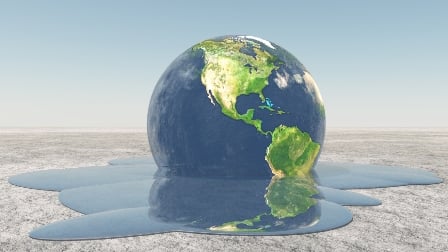

Catastrophe-prone 2017 was a staunch reminder that we cannot ignore weather and climate-related risks. The economic impact of hurricanes Harvey, Irma and Maria, alongside two major wildfires in California and British Columbia, and a devastating earthquake in Mexico, was significant.
Data and analytics company Jupiter suggests more than US$100 trillion in global assets are endangered by extreme weather and climate change. The company’s ClimateScore Intelligence Platform, launched last week, uses physics-based and AI-powered decisions to quantify weather and climate change risks and their potential economic impact.
Jupiter’s platform provides hyper-local data analysis at street-by-street or individual building resolution, including weather and climate predictions ranging from two hours to 50 years in the future. The ability to look so far into the future to enable climate-related catastrophic risk management is a real differentiator for Jupiter, according to co-founder and CEO Rich Sorkin.
“The vast majority of existing peril models assume stationarity, which essentially means that risk assessment and management assume an unchanging climate. At Jupiter, we factor in expectations of a changing climate, and our models can adjust dynamically based on current scientific data rather than relying on historical data alone,” said Sorkin.
“For insurers, catastrophic risk models based on our immediate environment are satisfactory in terms of pricing for the year ahead, but if you’re looking at longer-term risks, it’s better to match the risk management strategy to the asset length. There’s often a fundamental mismatch between the assets that are held by owners and the risk mitigation that’s available to them. At Jupiter, we aim to breach that gap.”
Another issue with regards to weather and climate-related risks is the cultural short-term memory that many of us seem to share. Before 2017, the US enjoyed about 10 years of benign natural catastrophe activity. Nimble insurers adapted their pricing strategy to the market environment and some rates decreased. Then Mother Nature delivered her mighty blow and the industry is speculating whether rates will climb back up again.
“There’s a long-term pattern in the insurance industry that in the absence of a loss event, rates tend to decrease over time, and then when there’s a big loss event, the combination of pressure upon future risk assessments combined with the need to rebuild reserves and balance sheets tends to drive pricing back up. There’s certainly a cyclical dynamic,” Sorkin told Insurance Business.
“I don’t expect the long-term cyclical dynamic of the insurance industry to change imminently. However, there’s an ever-growing understanding that climate-related risks are neither stationary nor cyclical. Of course, there are cyclical aspects to climate risk, but there’s a fundamental trend line in terms of ocean temperatures and sea level rise, which have directly consequent perils.”
The insurance industry is tuned into climate change. Those showing particular interest, according to Sorkin, are the reinsurers and the brokerage firms. Brokers have a fundamental responsibility to provide the best possible guidance to their clients in terms of risk transfer, management and mitigation.
Sorkin added: “Using a peril modelling platform like ours could really be a differentiator for brokers in terms of the quality of service they can provide to clients.”
